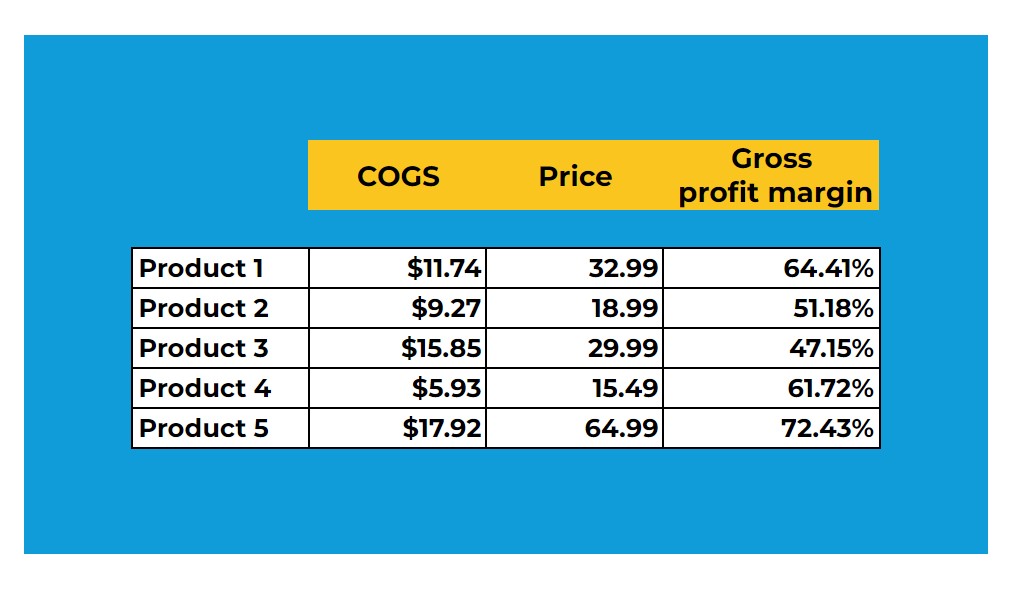Selling on marketplaces has become a new standard for many businesses. And it makes sense. In the past decade, ecommerce sales worldwide have seen a steady increase of about 15% YoY and are projected to hit $8 trillion by 2027. Obviously, the socioeconomic issues we have seen in the early 2020s played a major factor with the pandemic fueling the growth and the high inflation period cooling it off.
But there is no doubt that the numbers will continue to grow in the future and that people will buy more things online. And here comes the issue: how can online sellers become more competitive and attract more customers without increasing the cost per sale?
Let’s explore how to take advantage of marketplaces to increase your reach and revenue.
How to think about marketplaces
At their core, marketplaces have two clear goals: get more users and get more sellers on their platform. With more users, they will have an easier time attracting sellers. And with more sellers, they will have more product variety which will attract more users.
It sounds like a win-win-win situation. The users find the products they need in a single place, the sellers have access to a huge user base, and the marketplace makes money in the process. But it’s not necessarily like that.
For the marketplace to make money, they will have to charge all sorts of fees and commissions. And they will impose arbitrary rules on the sellers.
Think about it, what would happen if a marketplace:
- Charges a fixed referral fee for each sale?
- Charges a percentage commission for every sale depending on the product category?
- Demands that you don’t sell the products elsewhere at a cheaper price?
- Demands the sellers to accept returns regardless of the reason?
- Demands sellers to offer free returns?
Well…this is already happening on many marketplaces. And the result? All the products become more expensive because sellers are increasing the prices to be able to stomach the extra costs.
But it’s not all doom and gloom. There are some ways to increase your chances of success.
First steps to selling on marketplaces
When selling on marketplaces commissions and fees can eat up your profit margins. To make sure that your business will not take a hit while doing this you can run some numbers before you upload your products.
Decide which products to sell
Most likely you will have products in your shop that will not be viable to sell on marketplaces. Maybe there is too much competition for them, or it just doesn’t make sense financially. To assess the competition, the easiest way is to test them and see how sales will be. If the product doesn’t sell, remove it. But for the profitability, there’s more work upfront.
When preparing the product data, make sure to include the cost of goods sold and the commissions you will pay to the platform. Usually, marketplaces set them according to the product category. So you can pull this data in one file.
Depending on what your strategy or goal is, you want to look at some key metrics to calculate the feasibility of a product. The simplest way I found is to look at:
- Cost of goods sold
- Price
- Gross profit margin
- Marketplace commission per product category
- Profit margin – commissions (we will call this ‘new margin’)
You can also include an additional column with an arbitrary percentage to account for listing fees, seller account subscription costs, increased return rates, etc.
Let’s say you have these products:

If you want to sell only the products with 50%+ margins on the marketplace, you will end up with products 1, 2, 4, and 5.
But let’s see what happens when you include the marketplace commissions in the calculation.

When you subtract the marketplace commission and include some other fees in the picture, you end up with products 1, 4, and 5.
Study your competition
You must know what your competitors are doing to see what you’ll be facing in the marketplace. And there’s no better way of learning than ordering their products.
So, buy your competitors’ products, check how they process the orders, study their packaging, and try to return the items. This will give insights on the customer journey and their customer service. See what they’re doing right, and what you can do better.
If you want to go a step further, try to order from both the marketplace and their website. Besides the potential difference in pricing, this will also tell you if they have different approaches in their marketing efforts.
Create your account and upload your products
Now that you have all the information you need about which products to sell, and what your competitors are doing, it’s time to start.
First, you’ll need to create and set up your account with the marketplace. This will take some time because your request will be reviewed by the platform. Even though the process is fairly straightforward and fast most of the time, I would consider one week to complete it.
With your account created, it is time to upload your products. This can be done manually, through spreadsheets, or automatically through an app/integration found in the ecommerce platform’s app store.
However, I would recommend using a dedicated feed management platform simply because you will have more and better control over the data. After you import your product information into the platform you can use rules to filter out the products you don’t want to sell on the marketplace.
Also, most platforms offer you the ability to sync your orders with your ecommerce platform. This doesn’t sound that impressive, but it will save you from a lot of trouble regarding returns and overselling.
When you start selling, ask everyone and their mother for reviews! These are the backbone of your listing. Getting more reviews will increase the conversion rate. With more sales, your rank will increase which will improve your organic position. And this might mean you can reduce the amount you spend on ads.
Scaling on marketplaces
After you have your listings running for some time, you will have some baseline performance for them. In order to scale in the marketplace, you will need to outshine your competition. And there are a few different tactics you can try for this.
Listing optimization
Have a good look at your listing metrics, and spot which ones are doing good, and which ones aren’t. For the low-performing ones, try to understand why aren’t they reasoning with your audience.
Titles
Try changing the title of your products to include more details. This is the first thing the users will see about your listing. The most important information must be in there, so, try including the product attributes in the title. Here are some examples of what you can include:
- Apparel: Brand + Gender + Product Type + Attributes (e.g., color, material, size)
- Books: Title + Type + Format (e.g., paperback, eBook) + Author
- Electronics: Brand + Attributes + Product Type + Model
- Hard Goods: Brand + Product Type + Attributes (e.g., size, quantity, weight)
- Seasonal items: Occasion + Product Type + Attributes
Descriptions
The descriptions will allow you to include more details about the product and reinforce the information in the title. So include high-quality content to ensure the algorithms will see them as a credible source of information.
You can even look at the search terms people use when searching for your products and include them. However, don’t go overboard with this. Keyword stuffing is frowned upon and your listing might get penalized.
FAQ
The FAQ section can be used to answer all the objections your customers might have about your product. Answering them will shorten their decision-making process and reinforce the value proposition.
Moreover, you can use the FAQ section to pre-qualify your customers. You can include information about what your product is not. Doing this will reduce the product returns and the number of tickets for your customer support team.
Use a repricer
Marketplaces will generally allow one listing per item. This means that in case you sell branded products, you will be competing with other sellers on the same listing. And the only differentiating factor is the price.
Usually, the lowest price wins the Buy Box and that vendor will get the sale for that product. But manually changing your prices on every listing you have might be unrealistic.
So a repricer can do that for you. These are software solutions that will change the price of your products in real time (at the moment the Buy Box auction takes place) based on the inputs you have given it.
Run listing ads
If you have no ads running for your listings, you might be losing out on potential sales. Ads will allow your products to surface on the first page(s) and increase your visibility.
A good tip here is to not use ads only to surface your listing. Use it to improve it, as well. There are two metrics you should keep your eye on; click-through rate (CTR) and conversion rate.
If the CTR is low, that means your keywords might be too broad, your price point too high, your product images are not appealing enough, your title does not match the search intent, or might not include the right keywords, etc. If this is the case, try making changes to your keyword strategy or listing to see how you can improve that.
If the conversion rate is low, there is something wrong with your listing. So test different descriptions, and different questions in the FAQ, or try to get more reviews. Social proof is crucial on marketplaces.
Run ads outside the marketplace
You can only do so much on the marketplace itself. So when you have exhausted your options, try different tactics outside the marketplace.
An option is to look into influencer marketing. Try finding some content creators to sponsor and let them sell the product to their audience.
Or you can create user-generated content ads (UGC ads). When you manage to create one that performs well, it will start generating sales on its own which is great!
But the beauty is that it also has the possibility of sparking online conversations around your product increasing its visibility. This might even lead to catching the eye of content creators. And because marketplaces have affiliate programs, they might start promoting your product organically boosting your sales in the process.
Conclusion
If you are thinking about selling on marketplaces, remember that they charge you commissions which can eat your profit margins quite easily. So you will need to run the numbers and check which products are feasible to sell on a marketplace.
Keep an eye on your competitors and study their selling strategies. Check how they price their products, what emails they send out, and how they process returns.
After you have set up your account and your products are online, never stop testing. Always be on the lookout for small improvements and use listing ads to speed up the process.
Pro Tip
A marketplace’s highest asset is its user base. That’s why they are overly protective of their users and their data, especially email addresses. They know that once a seller has the email address they can just sell directly and cut the marketplace out completely.
Also, you don’t want to be dependent on marketplaces. They can always make changes to their terms and conditions, hike the commissions, charge additional fees, etc. If this happens they might lower your margins further or make it unprofitable to sell your products.
So, try to come up with ideas to direct users to your website and get their email addresses. The most important thing here is to not go against the marketplace’s terms and conditions as it might get you banned.
For example, you can include a flyer in the box and offer an extended warranty to users who register their product on your website. If you can’t add extra materials in the box, put a sticker on the product, or, if possible, print it on the product. This way, you will get their details and can increase the customer lifetime value (CLV).



